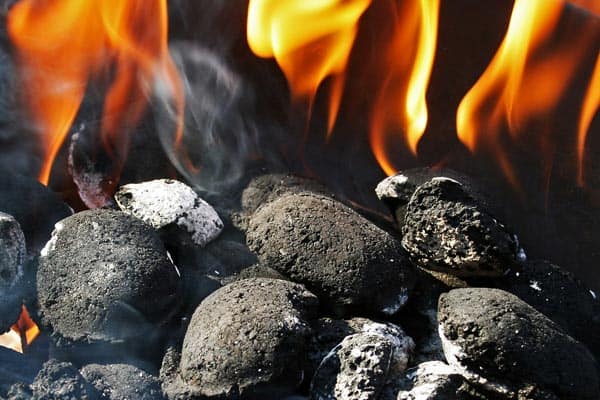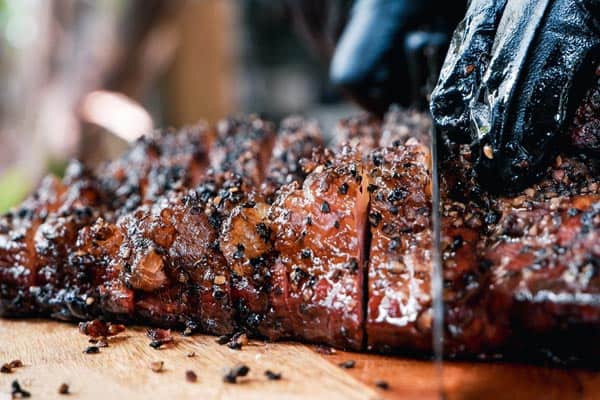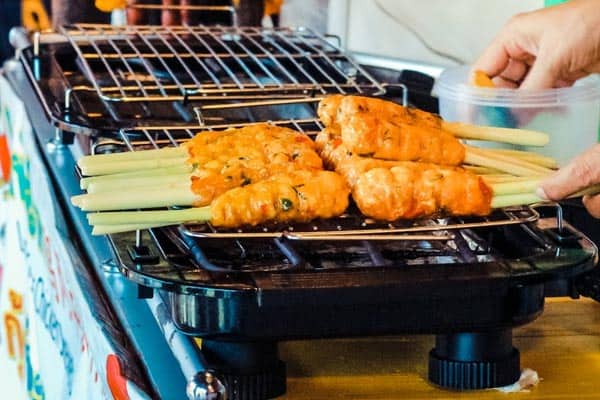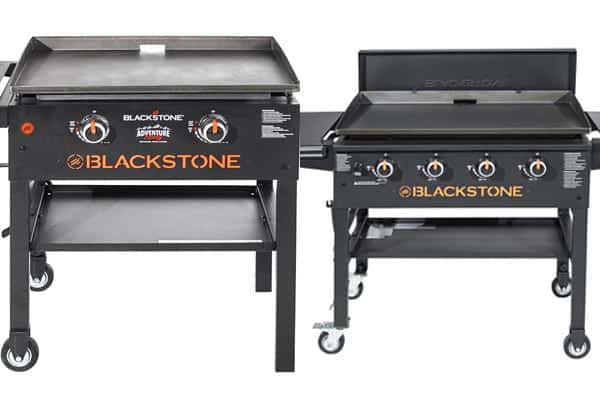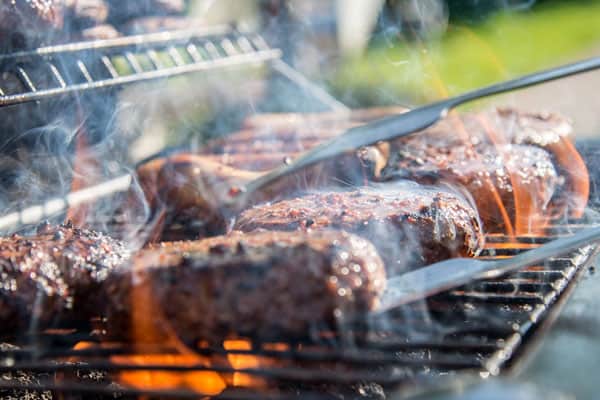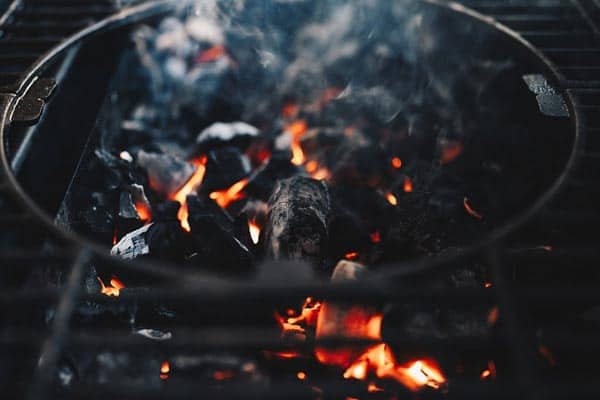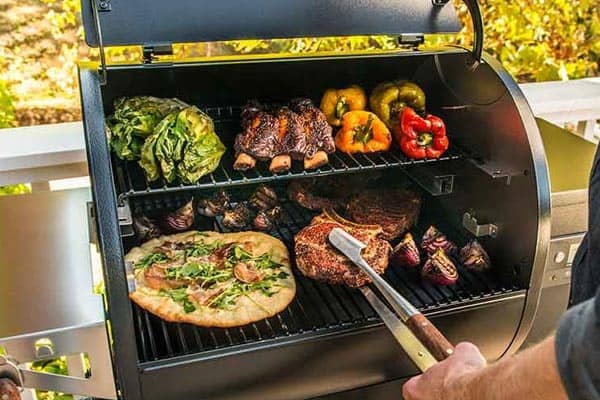Can You Use Charcoal in a Gas Grill? The Five Methods
Charcoal grills are great, and gas grills have many advantages associated with them when it comes to cooking your favorite cuts of meat. But, can you use charcoal in a gas grill?
Many people think that they’re interchangeable, but the answer is slightly more complicated than that. The type of grill you have will play a large role in the final answer.
For the most part, when it comes to gas grills, you don’t want to add charcoal to them. Gas grills come designed to accommodate the heat created by the burners instead of the heat generated by burning charcoal. If you decide to put charcoal into your gas grill, you’ll almost always end up replacing several parts due to damage, and you may have to replace the entire grill itself.
Gas grills have a few big differences when it comes to comparing them with charcoal grills, and this mainly includes the type of materials they incorporate and heat the heat resistance levels they have.
A lot of gas grills have stainless steel bodies, burners, and details that the ash and heat levels charcoal produces can easily clog or damage.
Adding charcoal to your gas grill can result in warped metal, clogged components, and stray hot coals that could cause burns to whoever is using the grill.
If you add charcoal to a grill that comes specifically designed for gas, you could easily damage it beyond repair and find yourself replacing it. However, there are notable exceptions to this hard and fast rule.
You could buy a combo grill that has the option of using gas or charcoal as the fuel source to make them more versatile. Unfortunately, you usually gain the convenience factor of using both fuel sources while sacrificing quality. This is especially true if you buy a lower-end combination grill model.
High-end combination grills that support charcoal and gas tend to be very bulky and expensive for home grillers. As a compromise, some brands offer things like charcoal trays that slide into gas grills to help give you that smokey flavor without ruining your grill components.
Five Methods for Getting a Smokey Flavor with a Gas Grill
Since gas grills introduce benefits like space management, efficiency, and time to home cooks, they’re a solid favorite appliance.
They’re easy to regulate, light, and cool off while allowing you to cook bigger portions of food at one time. However, they do have a general blandness when it comes to imparting any flavors into your food that is a big drawback.
Even less expensive charcoal grills introduce a very unique smoked flavor into your food, and you get a slightly charred outer layer that is very pleasing. While you won’t get the same flavor profile with a gas grill, there is a way to help give you a hint that smokey-flavoring people love.
Method One – Use a Freestanding Smoking Box
You can buy a freestanding smoker box that uses either pellets or wood chips to produce smoke. This mimics the flavors you’d get if you mixed your charcoal with wood chips to grill out, and these smoker boxes come in a huge range of sizes and shapes.
There are a series of holes on the top of the smoker that allow the smoke to escape after it infuses with the food that sits on a grate in the body of the smoker.
These smoker boxes are very straightforward to use, and all you’ll need to have wood chips, your gas grill, and time. When you finish cooking with it, your food will mimic being cooked on a charcoal grill that you set to very low heat. It’ll be smokey, rich, and have a slightly charred taste to it.
Method Two – Adjust Your Grill’s Heat
Heat distribution is another big sticking point between charcoal and gas grills. Charcoal grills come with the ability to create different settings by moving the grate closer or further from the coals or setting a two-zone fire.
You can recreate this by adjusting your grill’s settings using the cooktop burners if it comes equipped with them.
To do this, all you have to do is set one burner on the highest setting it has and set the second burner on the lowest setting it has.
You’ll end up with food that has non-enzymatic browning that mimics the caramelization that happens to food when sugars reduce and amino acids come into play at higher temperatures.
Method Three – Tinfoil
If you want to increase your chances of getting that smokey flavoring with a charred outer layer, you can try out the tinfoil method when you cook.
You’ll need to have an old baking sheet you don’t use anymore or a sheet of culinary tinfoil to get started. You do have to pay extremely close attention every step of the way with this process, and getting distracted can result in burned food.
To start, place your sheet of culinary-grade tinfoil on the top grate of your grill to allow the heat to build up. Once it gets very hot, use a pair of tongs to remove the foil from the grate.
Quickly put your food on the grate and listen to it sear before flipping it to get an even char. You only have around 30 seconds before the heat dissipates, so you have to be very quick once you remove the foil.
Method Four – Cover Your Grill
Charcoal grilling has a very distinctive taste, smell, and look to it because the carbon fuel produces a pure or almost completely pure heat that you can’t get with gas. When you take the lid off your charcoal grill and open the air dampers, this is when charcoal will burn at the hottest.
You can bring your gas grill up to similar temperatures if you’re very careful, but you have to do the opposite to get there.
Start by cranking your gas grill’s burners up as high as you can possibly get them and shutting the lid. This will help maintain the heat levels, and the heat will escape very quickly when it isn’t contained.
Method Five – Add Wood Chips
You can safely add wood chips to your gas grill in several ways to help capture that smokey flavoring. You can’t put them directly into the grill by themselves, but you can make disposable smoker pouches or boxes to slip them in if your grill doesn’t have a built-in smoker box.
You can use the following steps to create smoker pouches to use in your gas grill.
The first thing you want to do is measure out how much wood chips you need for your recipe. Once you find out, divide it up equally in the number of servings you want to make, so it’s ready to wrap. Next, you can get out a sheet or two of heavy-duty aluminum foil.
Place your wood chips inside the individual aluminum foil sheets before shaping the foil like a burrito with folded sides. Punch a small hole in the bottom of each pouch you created to allow the smoke to escape once you light the wood chips on fire. Put this pouch underneath your grill’s grate, and make sure that the pouch fits over your fire shield.
Allow the wood chips to heat up and start to smoke before you bring out your food to cook. Once they do, you can place your food on the grate right over the smoker pouch and let it smoke. This will slowly cook your food while infusing some different flavors.
Charcoal or Gas Grills – Which Cooking Method is Healthier?
When you start looking at the different health benefits of using one source of fuel over the other, you have to consider how you use your fuel source and where it comes from.
If you choose to use very cheap coals that have a host of ingredients, you could get worse emissions than you’d get by burning propane. Natural hardwood or pure lump coal is more expensive, but it won’t give off any nasty emissions when you use it to make it healthier.
Propane is a safe fuel source as long as you use it outdoors, and propane doesn’t make your food any less healthy.
Many people who want specific flavors may swear by using high-quality charcoal, but it doesn’t mean that your food is going to be any healthier than the food you cook using a gas grill or stove. So, both methods are equally healthy.
Should You Buy a Charcoal or a Gas Grill?
Knowing what you know now, are you going to buy a gas or charcoal grill if you can’t get both of them?
Ideally, you’d put anything you’d need to smoke and red meats into a charcoal grill while saving your gas grill for lighter meats and veggies. The choice will come down to personal preference if you can’t have both.
If the taste of your food is the biggest driving factor, we recommend you go with a charcoal grill because it has a smokey flavoring.
If you want something that is easier and more convenient to use and clean, go with a gas grill. Your cooking space will come into play as well because you can use smokeless gas grills indoors while you can’t use charcoal ones anywhere but outside.
Frequently Asked Questions
1. Are gas grills cheaper to run than charcoal grills?
Propane will initially cost you more money upfront, but charcoal will cost you around $3.50 each time you fire up your grill while gas only costs around $0.60 per use. Propane prices can also fluctuate, but they always average out in your favor because you get a lot of use out of a single canister.
2. How does the taste differ between gas and charcoal grills?
Charcoal grills give you that very deep and smokey flavor profile with a slightly charred outer layer. Gas grills have a slightly more bland flavor profile, and they can’t get that nice char on the outside of the food. You can add wood chips, but this will only give you a very light smokey taste.
3. Why don’t gas grills incorporate lava rocks anymore?
Lava rocks were once used to help create a barrier that helped gas grills retain their heat, but they were also very porous and soaked up a lot of grease and food drippings. Hygiene was the main driving factor that had gas grills turning away from using them.
4. Can ash damage a gas grill?
Charcoal produces ash as it burns, and this ash can get into the delicate components of your gas grill and cause clogs or damage. It can also cause the metal to get too hot inside the grill, and the metal can eventually warp and prevent the grill from forming a heat-proof seal.
5. Is grilling on a gas grill healthier than frying foods?
Yes, grilling on almost any type of grill is healthier than frying your food because the majority of the grease and fat will drip away from the food. In turn, you’ll get healthier options that have less fat and calories than you’d get if you decided to fry everything.
6. Is grilling with charcoal grills bad for your health?
For the most part, grilling is a healthy way to cook food. Charcoal can release a few compounds that are potentially cancer-causing, including heterocyclic amines and polycyclic aromatic hydrocarbons.
The polycyclic aromatic hydrocarbons come from the meat fat when it drips down onto the coals or grill element and gets deposited back into the food from rising smoke and flame-ups.
7. Which brands are worth considering with gas grills?
There are several reputable brands available that make high-quality gas or charcoal grills. You could try Weber, Big Green Egg, Coleman, KitchenAid, Member’s Mark, Dyna Glo, Broil King, Kenmore, Char-Griller, Napoleon, or Char-Broil.
